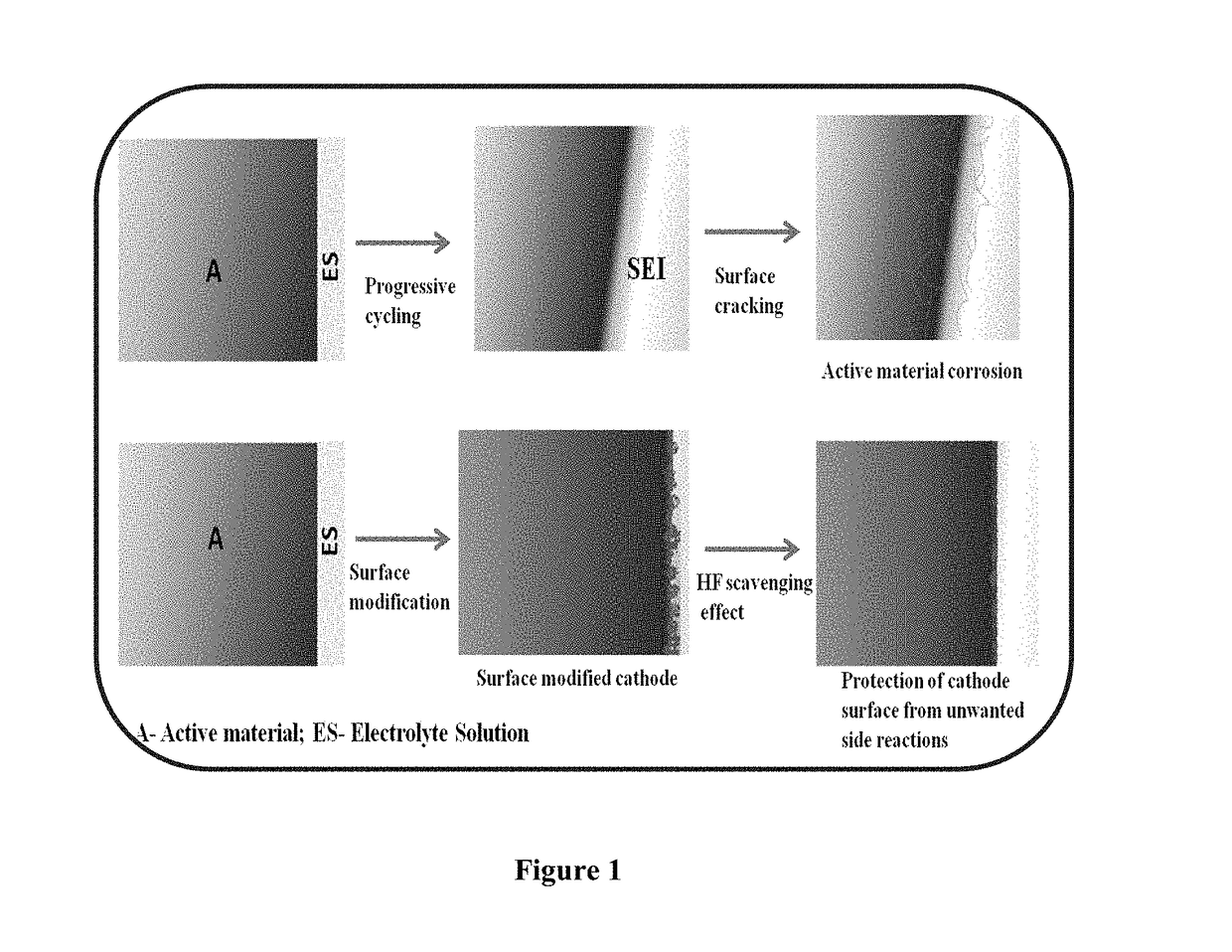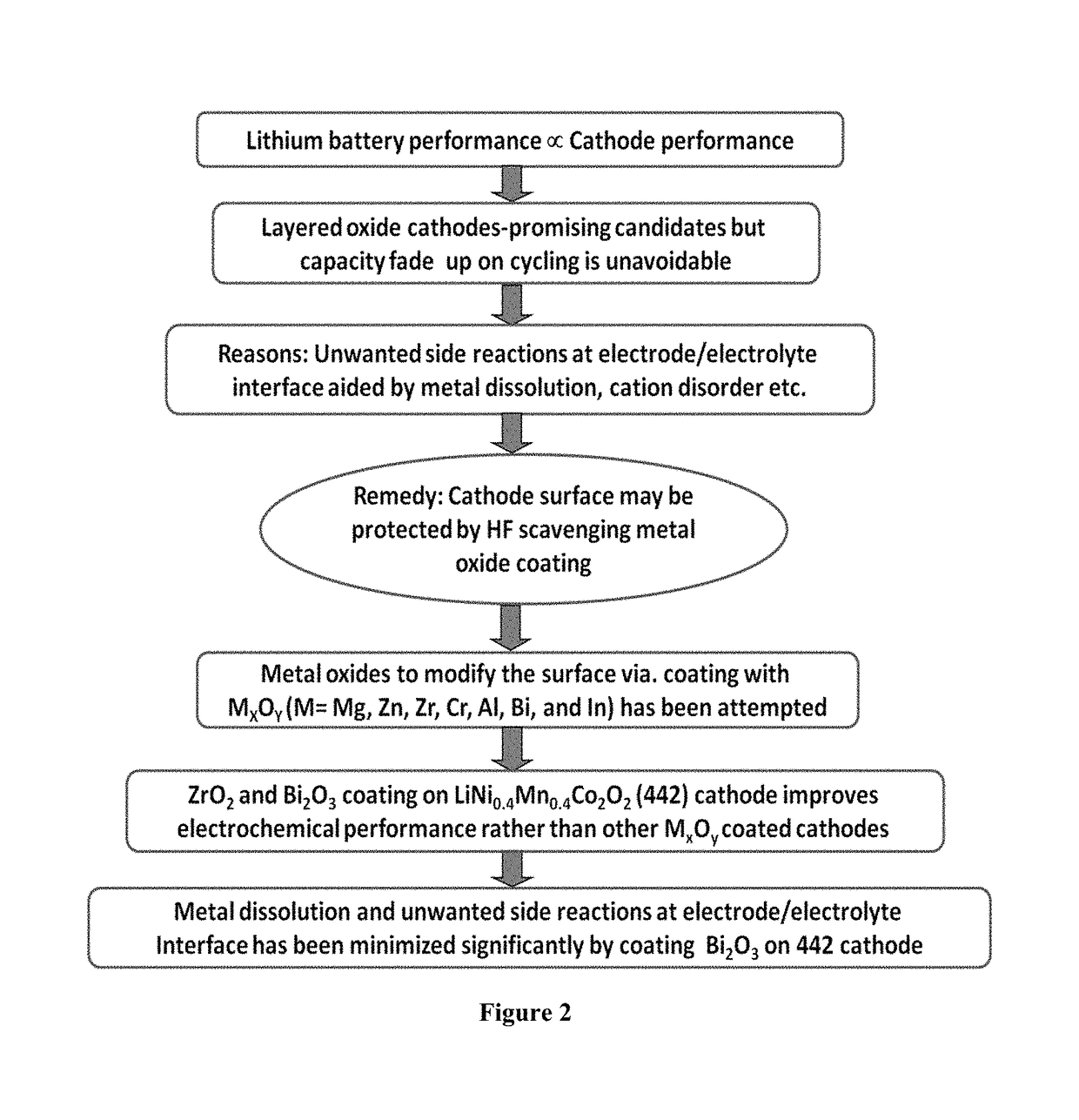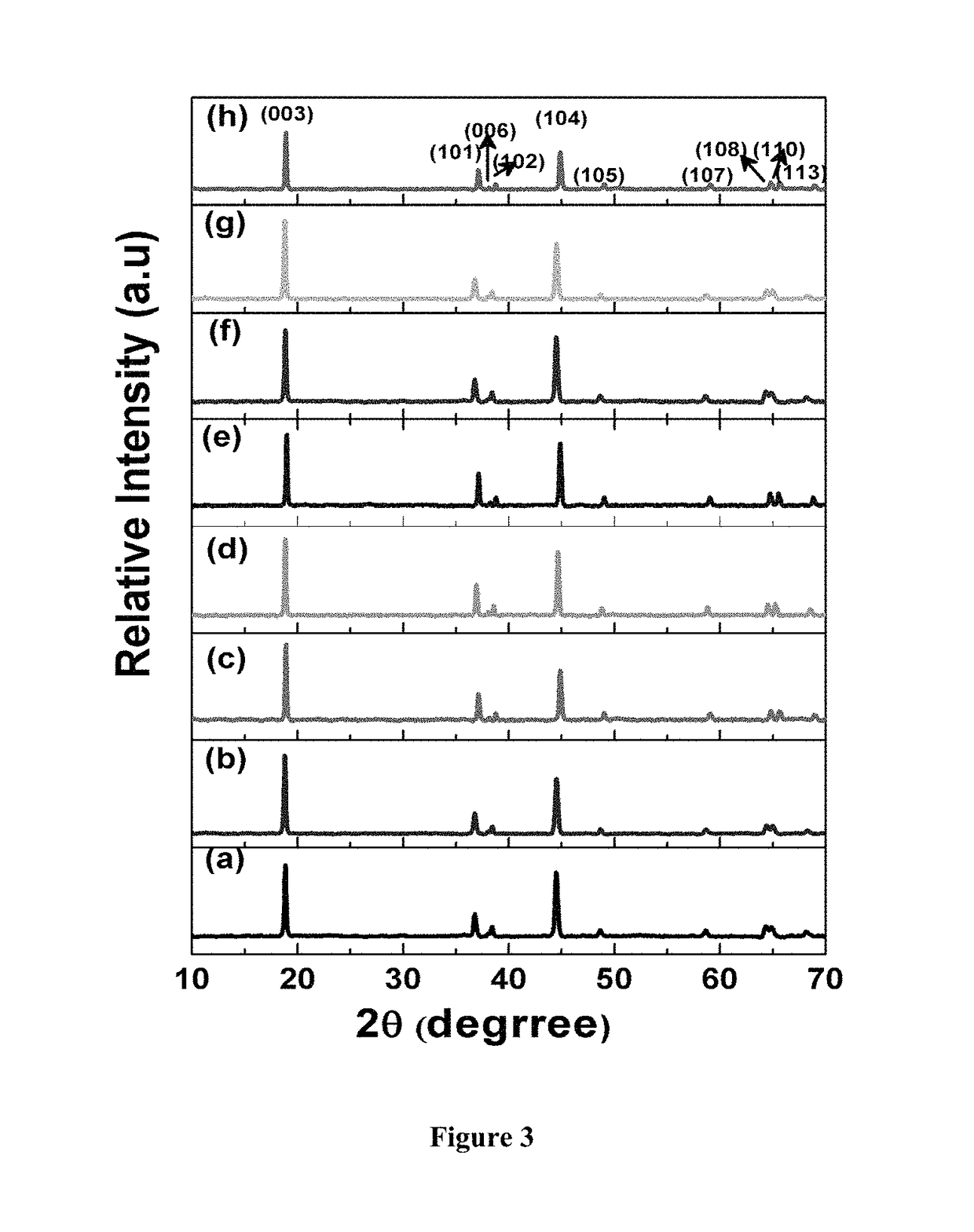Surface modified cathode with improved lithium intercalation behavior
a lithium intercalation and cathode technology, applied in the field of surface modified cathodes with improved lithium intercalation behavior, can solve the problems of poor electrical conductivity, capacity fade, and same material not suitable for cathodes which do not, and achieve the effect of improving lithium intercalation behaviour
- Summary
- Abstract
- Description
- Claims
- Application Information
AI Technical Summary
Benefits of technology
Problems solved by technology
Method used
Image
Examples
example 1
Preparation of LiNi0.4Mn0.4Co0.2O2 (442) Cathode
[0066][Ref: D. Bhuvaneswari, Gangulibabu, N. Kalaiselvi, J Solid State Electrochemistry (2013) 17:9-17] LiNi0.4Mn0.4Co0.2O2 (442) cathode was synthesized by adopting surfactant co-assisted sol-gel synthesis approach using citric acid as chelating agent. Stoichiometric ratios of high purity starting materials 10.202 g of LiCOOCH3.2H2O, 9.9536 g of (CH3COO)2Ni. 4H2O, 9.8036 g of (CH3COO)2Mn.4H2O, and 4.9816 g of (CH3COO)2Co. 4H2O in the molar concentration of 1:0.4:0.4:0.2 were dissolved in water with stirring to get a homogeneous solution. To the solution, an optimum amount of 10 ml of 0.01M concentration of CetylTrimethyl Ammonium Bromide (CTAB) surfactant was added dropwise with stirring. Followed by this, an optimized amount 3.2 g of 1M of citric acid as chelating agent was added. Further, 0.05N ammonium hydroxide solution was added up to adjust the pH value of 9 and the process of stirring and heating at 80° C. was continued to get ...
example 2
Preparation of Surface Modified LiNi0.4Mn0.4Co0.2O2 (442) Cathode
[0067]Fine dispersion of 1 g of 442 powder in 100 ml of water was treated individually with a solution of 0.6 M concentration of aluminium nitrate solution at different weight percentage (1-5 wt. %) followed by the addition of 0.05N ammonium hydroxide to precipitate the Al2O3 (insitu formation). The solution containing 442 compound and in-situ formed metal oxide (Al2O3) was evaporated slowly at 80° C. and the dried powder was collected. The 442 compound surface modified with 1-5 wt. % of Al2O3 coating concentration was subjected to furnace calcination individually at 500° C. in air for 8 h to obtain Al2O3 coated LiNi0.4Mn0.4Co0.2O2 compound.
example 3
[0068]Surface modification with In2O3 was carried out by adopting the same procedure mentioned in example-2 by taking the metal precursor, viz., indium nitrate 0.6M at different weight percentage (1-5 wt. %) followed by the addition of 0.05N ammonium hydroxide to precipitate the metal hydroxide (insitu formation). The 442 compound surface coated with 1-5 wt. % of In2O3 was subjected to furnace calcination individually at 550° C. in air for 8 h to obtain In2O3 coated LiNi0.4Mn0.4Co0.2O2 compound.
PUM
| Property | Measurement | Unit |
|---|---|---|
| thickness | aaaaa | aaaaa |
| temperature | aaaaa | aaaaa |
| temperature | aaaaa | aaaaa |
Abstract
Description
Claims
Application Information
 Login to View More
Login to View More - R&D
- Intellectual Property
- Life Sciences
- Materials
- Tech Scout
- Unparalleled Data Quality
- Higher Quality Content
- 60% Fewer Hallucinations
Browse by: Latest US Patents, China's latest patents, Technical Efficacy Thesaurus, Application Domain, Technology Topic, Popular Technical Reports.
© 2025 PatSnap. All rights reserved.Legal|Privacy policy|Modern Slavery Act Transparency Statement|Sitemap|About US| Contact US: help@patsnap.com



